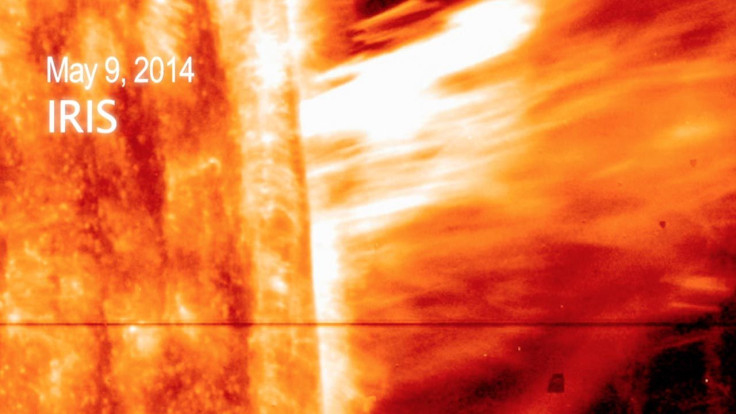NASA’s IRIS Catches Gigantic Eruption Of Solar Material For First Time [VIDEO]

NASA’s new Interface Region Imaging Spectrograph, or IRIS, a solar observatory, caught a huge coronal mass ejection, or CME, which was erupted on the sun on May 9, the space agency said on Friday, and added that this was the first CME observed by IRIS.
According to NASA, during the time of the ejection observed by IRIS, a “curtain of solar material” erupted outward at a speed of 1.5 million miles per hour. IRIS, which was launched in June last year, is designed to peer into the lowest levels of the sun’s atmosphere with better resolution than ever before.
"We focus in on active regions to try to see a flare or a CME," Bart De Pontieu, the IRIS science lead at Lockheed Martin Solar & Astrophysics Laboratory in Palo Alto, Calif., said in a statement. "And then we wait and hope that we'll catch something. This is the first clear CME for IRIS, so the team is very excited."
According to scientists, IRIS is required to point at certain areas of the sun at least a day in advance to capture CMEs, which “involves some educated guesses and a little bit of luck.”
Check out the video here:
The IRIS imagery focuses in on material of 30,000 kelvins at the base, or foot points, of the CME. In the video, the line moving across the middle of the footage is the entrance slit for IRIS's spectrograph, an instrument that can split light into its many wavelengths. The technique, scientists said, allows them to measure temperature, velocity and density of the solar material behind the slit.
“The field of view for this imagery is about five Earths wide and about seven-and-a-half Earths tall,” NASA said.
IRIS was designed and is managed by Lockheed Martin Solar and Astrophysics Laboratory while NASA's Ames Research Center in Mountain View, Calif., provides mission operations and ground data systems.
© Copyright IBTimes 2024. All rights reserved.












